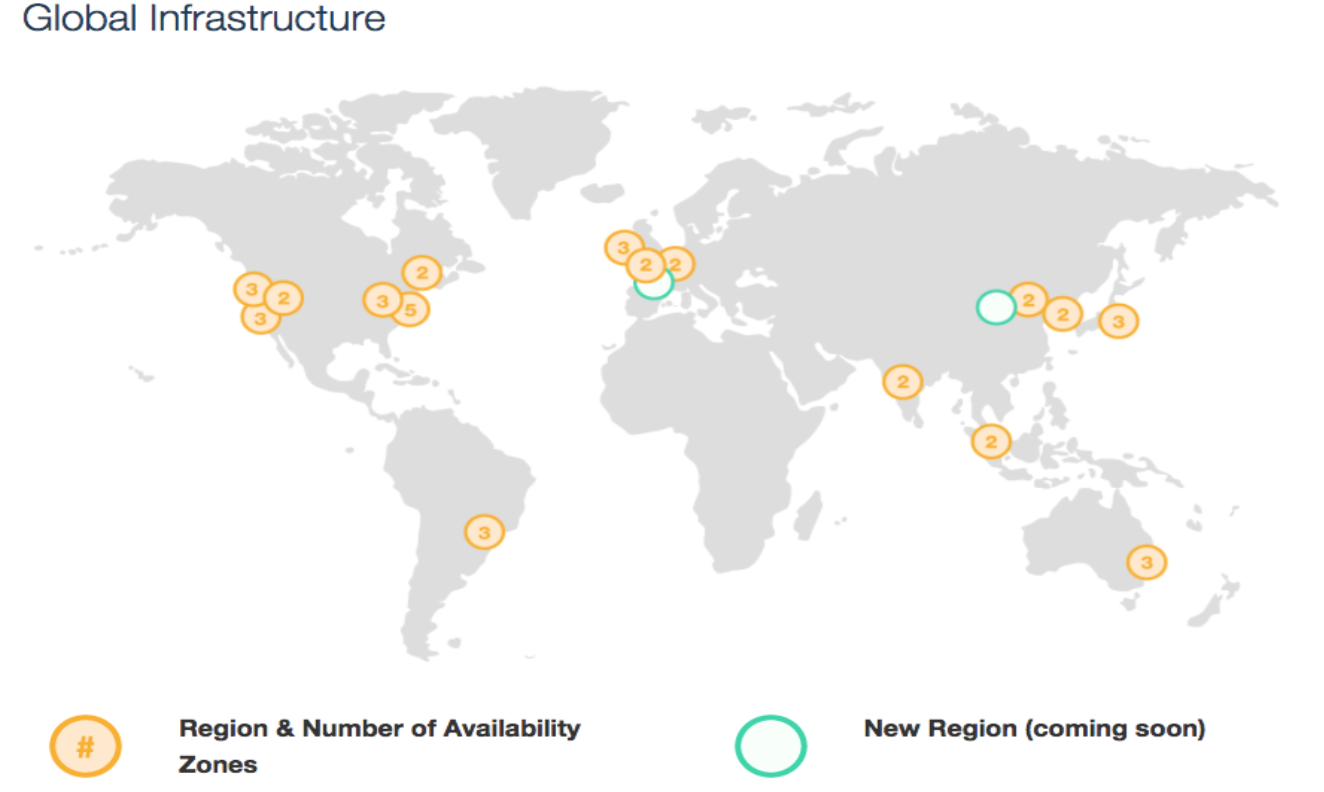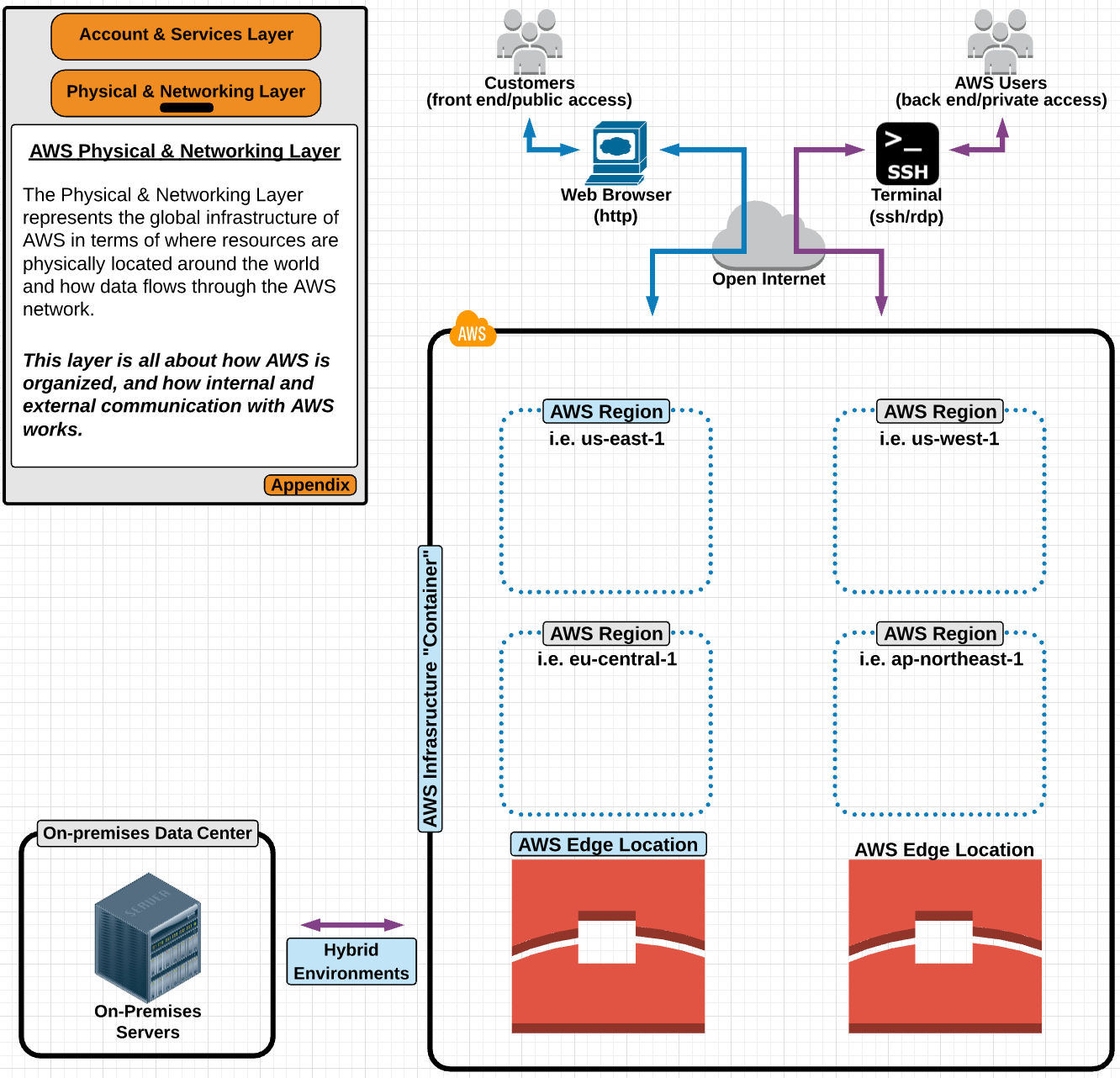AWS Physical and Networking Layer
Represents the global infrastructure of AWS in terms of where resources are physically located around the world and how data flows through the AWS network.
This layer is all about how AWS is organized, and how internal and external communication with AWS works.
At higher level, there will be AWS Region and AWS Edge Location.
AWS Region:
- AWS is made up of regions which are a grouping of independently separated data centers in a specific geographic regions known as "Availability zones".
- Availability of regions allows the architect to design applications to conform to specific laws and regulations for specific part of the world. When viewing a region in the console you will only view resources in one region at a time but they will be across all AZs within that region.
- Some AWS services work "globally" and not within a specific region. For example, users created in IAM will work across regions.

Availability Zones:
- Availability zones work together in a region to make up a collection of your AWS resources.
- Properly designed applications will utilize multiple availability zones for fault tolerance and failover.
- ZA's (as they are known) have direct low latency connections between each AZ in a region but each AZ is isolated from other AZ's to ensure fault tolerance.
- If you store something, say S3 bucket, in one datacenter of one AZ, it is going to be synced across other AZs and other datacenters within one region, as part of S3's commitment of durability and availability.

AWS Edge Location:
- An Edge Location is an AWS datacenter which does not contain AWS services.
- Instead, it is used to deliver content to parts of the world.
- An example would be CloudFront which is a CDN:
- Cached items such as a PDF file can be cached on an edge location which reduces the amount of "space/time/latency" required for a request from that part of the world.
